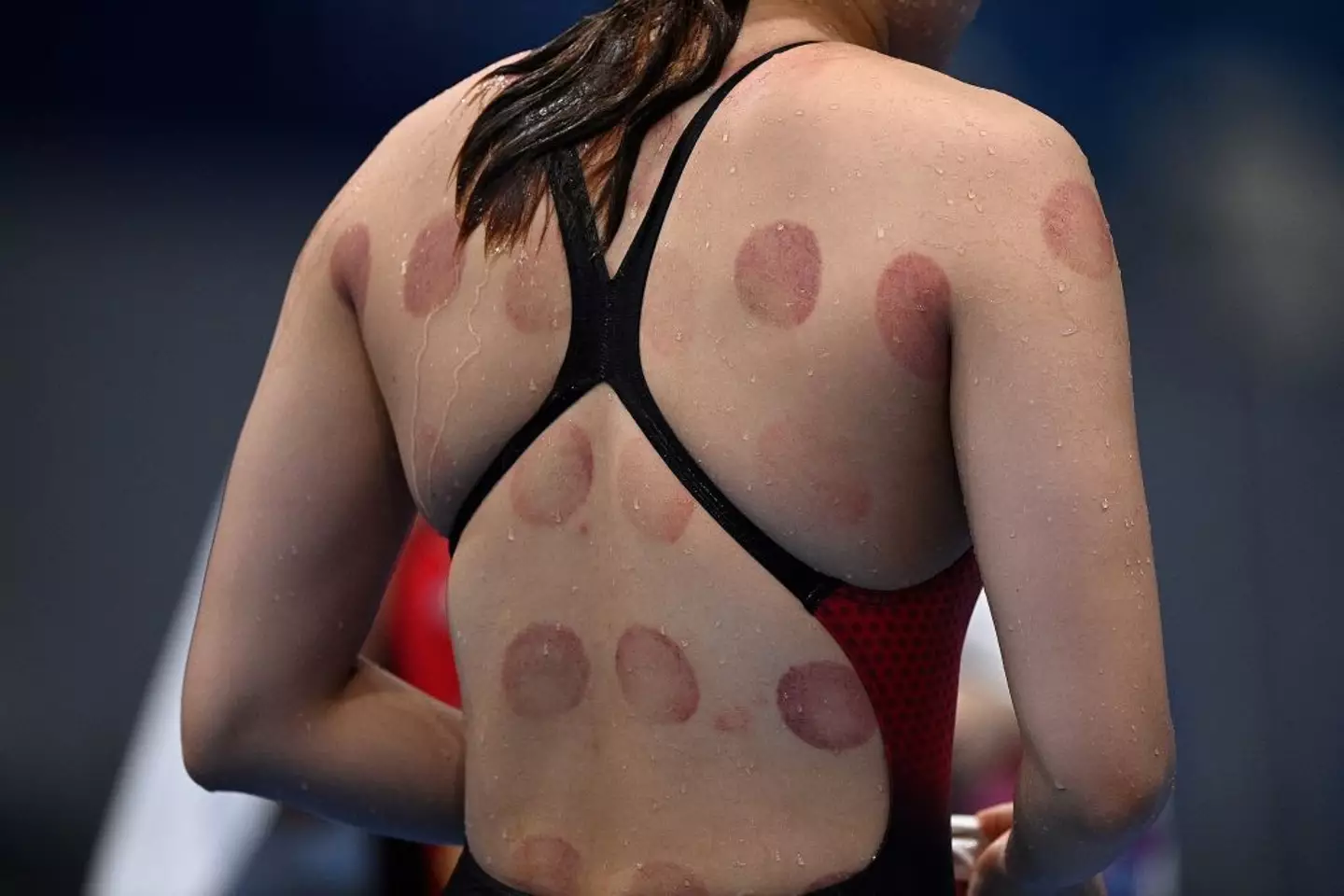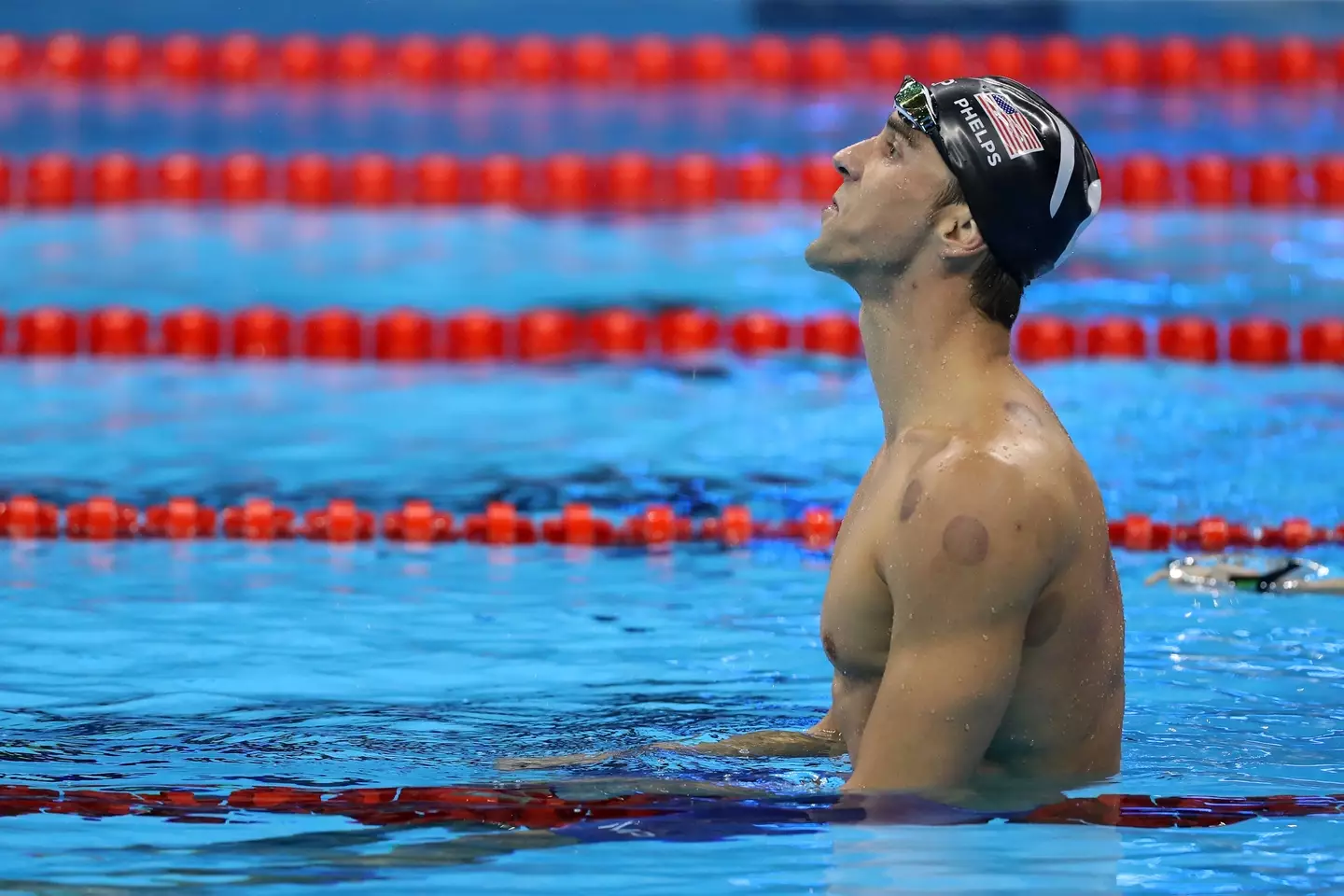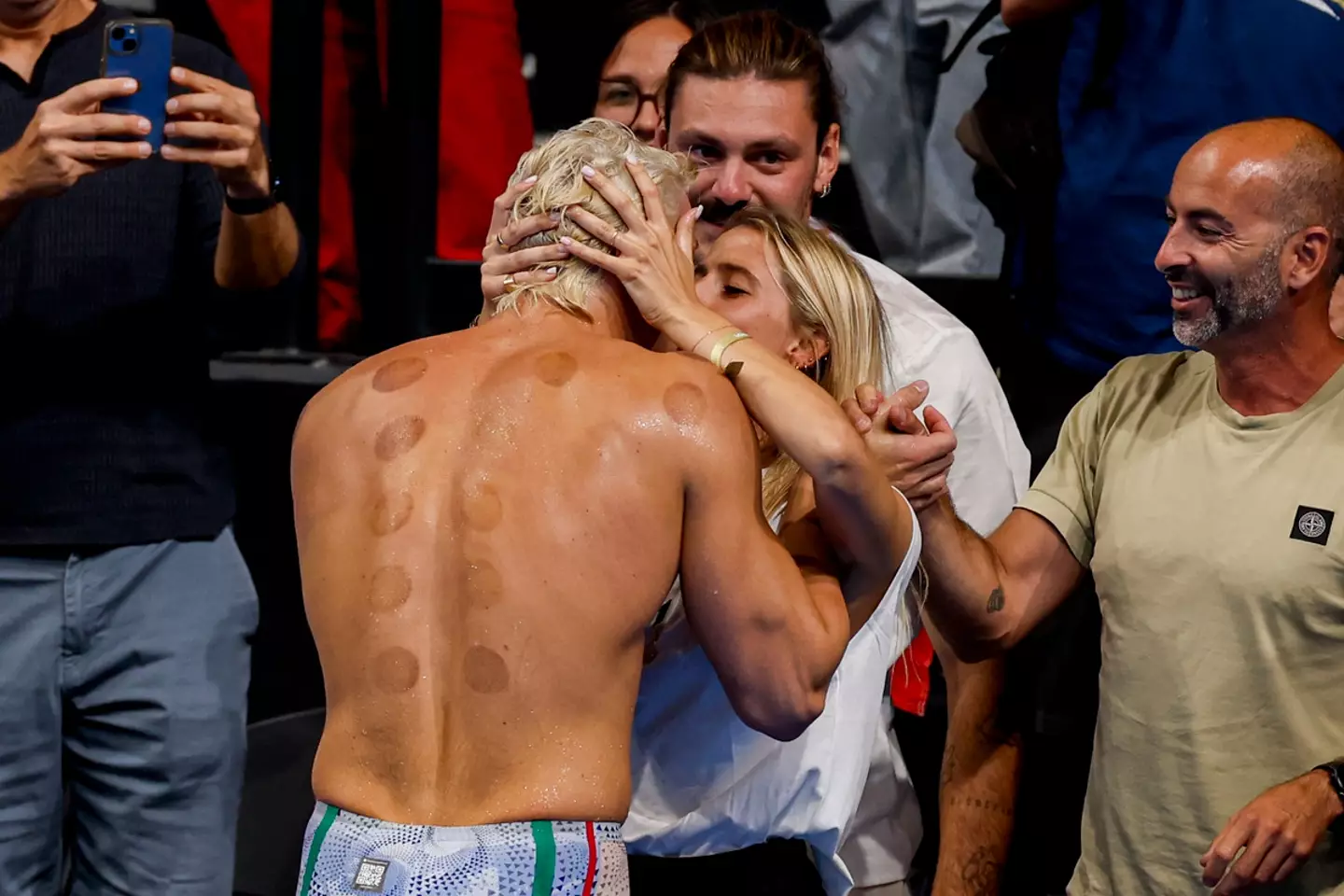
This year’s Olympics are now in full swing and it’s all eyes on the athletes.
From archery and shooting to athletics and gymnastics, there’s all kind of sports taking place across Paris, France, at the moment.
One fan-favorite sport to watch is the swimming, and this year there’s a whopping 854 athletes from 187 different countries competing.
But there’s a common theme you might have spotted with some of the swimmers and that’s the unusual dark red circles they have on their backs.

While it might look like they’ve had a fight with an octopus and lost, there’s a very different reason for the odd markings.
It turns out that the large spots are from cupping therapy – an ancient healing technique that involves placing cups on the skin to create suction and increase blood flow to the area.
The unconventional method is supposed to help with muscle recovery and is used as a type of deep tissue massage.
Some athletes were spotted with cupping therapy bruises back at the Rio Olympics in 2016, and it’s still seemingly popular now.

Gymnast Alexander Naddour told USA Today back in 2016 that cupping was supposedly the ‘secret’ to his health.
He added: “It’s been better than any money I’ve spent on anything else.”
Away from the Games, basketball player Kyle Singler has also praised cupping therapy.
“The bruises do look more intense than what they actually feel like, but the benefit from it is really great,” he previously insisted.
Singler continued to tell Sports Illustrated: “You’re not necessarily getting the immediate response that you might want but over time it does help with recovery and loosening tissue and stuff like that.”
But does cupping therapy actually work according to experts? It’s seems as if the jury’s still out.

According to Harvard Health, some studies have found that cupping might provide some relief for a number of musculoskeletal and sports-related conditions. The quality of this evidence was ‘limited’, however.
Elsewhere a 2022 review found that wet (as opposed to dry cupping) was effective for lower back pain.
While the bruises people get from cupping are pretty gnarly, the therapy is generally seen as safe to practice – even if people aren’t 100 percent on how affective it is.
“Most experts agree that cupping is safe. As long as those treated don’t mind the circular discolorations (which fade over a number of days or weeks), side effects tend to be limited to the pinch experienced during skin suction,” Harvard Health explains.
“It’s quite unusual that cupping causes any serious problems (though, rarely, skin infections have been reported).”
There you have it, folks.
The stunning reason this 25-year-old refuses to shave off her unibrow despite cruel comments

Embracing Natural Beauty: Sophia Hadjipanteli’s Unibrow Journey
Model Sophia Hadjipanteli is redefining beauty standards by embracing her natural unibrow, despite facing harsh criticism. She has graced numerous major magazines, advocating for self-expression and natural beauty. Inspired by her mother, Sophia learned to be comfortable in her own skin and to celebrate her uniqueness.Despite her confidence, Sophia has faced negativity both in high school and online. Instead of letting unkind words affect her, she used them to strengthen her self-acceptance. “It’s especially satisfying to know that that big unibrow is on the cover of Glamour UK, and it looks great,” she said.
Sophia’s positivity extends beyond herself. She started the Unibrow Movement on Instagram, encouraging people to celebrate their unique features. The hashtag has become a platform for positive comments and feedback, helping thousands embrace their individuality. “I get to embrace the unibrow — and if I don’t, I can always tone it down. But it’s always my decision,” Sophia stated.
Sophia acknowledges that self-love is a journey. She candidly shared her regret about getting lip fillers, admitting it was a mistake she wanted to be open about. “It takes time to build that relationship with yourself, but once you do, everything just feels so much better. You feel free,” she explained.
Sophia Hadjipanteli’s journey is a powerful reminder of the importance of self-acceptance and the beauty of being unique.



Leave a Reply